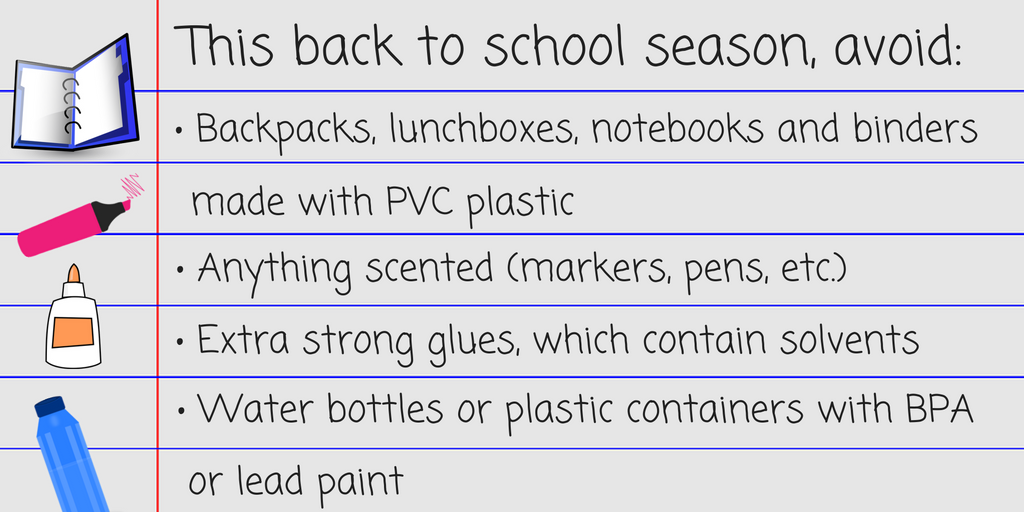Back-to-School: Tips for toxic-free school supplies
Children are especially sensitive and susceptible to the dangers of toxic chemicals in our everyday products because they are still developing. As you take on back-to-school season, here are some tips on what to avoid and what to look for.

Children are especially sensitive and susceptible to the dangers of toxic chemicals in our everyday products because they are still developing. As you gear up for back-to-school season, here are some tips on what to avoid and what to look for:
1) Backpacks
Avoid backpacks made with PVC (polyvinyl chloride). PVC products often contain phthalates, which have been linked to asthma, learning disabilities, diabetes, and other health problems. Many phthalates have been banned in toys, but are still found in back-to-school products. Learn more about avoiding PVC in all school supplies here.
2) Crayons and markers
Skip scented writing utensils whenever possible. Ingredients used to create fragrances are not listed on ingredient labels, and could be linked to negative health effects.
Some crayons have been found to contain deadly asbestos fibers. According to the U.S. Occupational Safety and Health Administration (OSHA), there is no safe level of asbestos exposure. Inhaling asbestos fibers can cause cancer, among other health problems. Crayons that were found to contain asbestos fibers were made in and imported from China, so purchasing American-made crayons is a safer bet. Learn more specifics about crayons with asbestos fibers here.
3) Glue
Avoid extra strong glues, which contain solvents. Solvents can have serious effects on brain function, including memory and other cognitive problems. Look for glue sticks and “school glue,” which are safer.
4) Notebooks and binders
Avoid vinyl three-ring binders and notebooks with plastic covers. Look instead for cardboard binders and notebooks or look out for “no PVC” on labels.
5) Lunchboxes and water bottles
Keep your kids’ food and drinks away from toxic chemicals that are sometimes found in lunchboxes and bottles like lead paint, PVC, BPA, and microbial chemicals, which are hormone-disruptors. Even low levels of lead have been shown to affect IQ and behavior, especially in children, and BPA is a hormone-disrupting chemical linked to cancer, and type-2 diabetes. Avoid lunch bags and boxes with shiny plastic or with an “anti-bacterial” label and look for BPA-free plastic or paint-free stainless steel.

